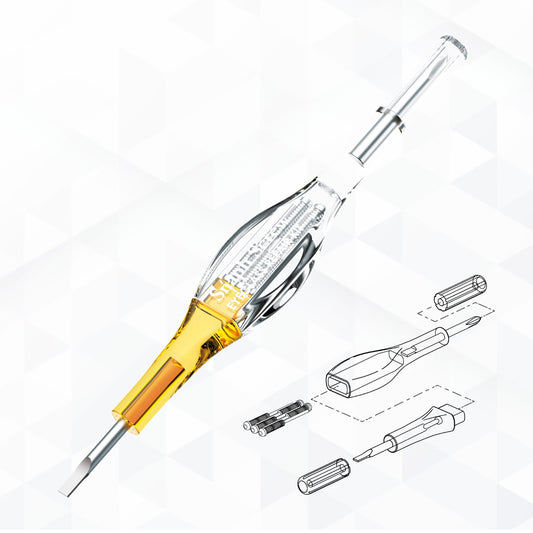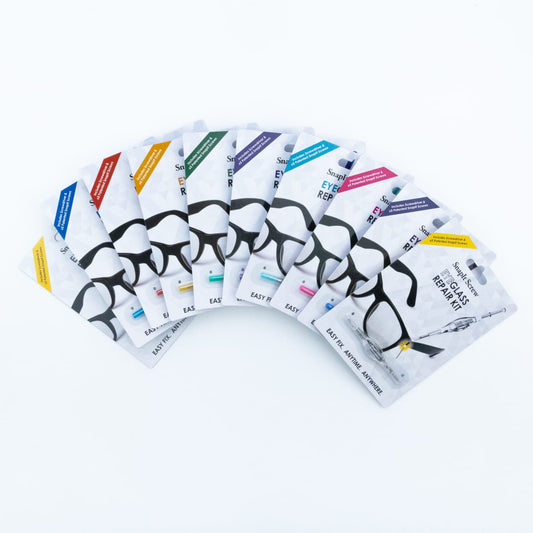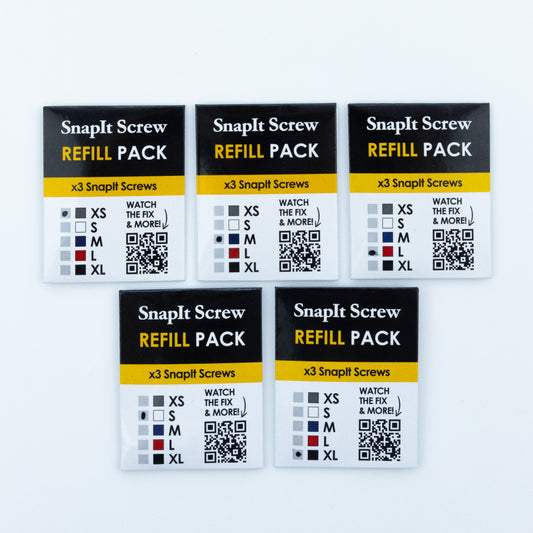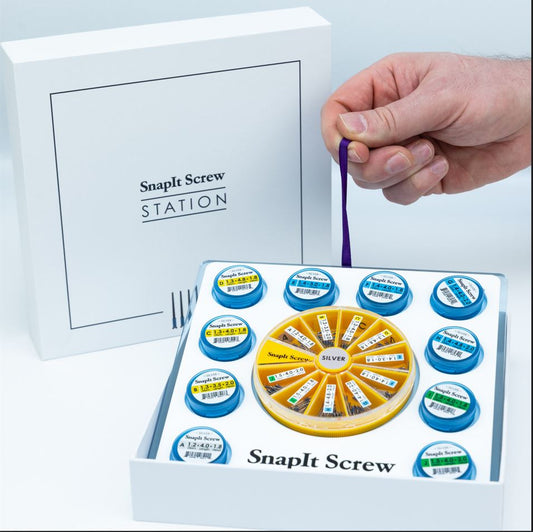Choosing the right eyeglass frame isn’t just about style, it’s also about comfort, durability, weight, and how well the frame suits your daily lifestyle. With so many materials available, from classic metals to cutting-edge composites, it can be tough to know which one truly meets your needs.
Metal Frames - Sleek, Adjustable, and Timeless
Best for: People who want a lightweight, flexible frame with a minimalist look
Pros:
-
Usually lightweight and comfortable
-
Adjustable nose pads for a better fit
-
Thin and discreet designs
-
Durable with proper care
Cons:
-
Can bend if handled roughly
-
May cause allergic reactions in nickel-sensitive wearers (unless hypoallergenic)
-
Not ideal for contact sports or heavy impact
Popular types of metal:
-
Titanium - Strong, lightweight, corrosion-resistant, hypoallergenic
-
Stainless steel - Affordable, sleek, but slightly heavier than titanium
-
Memory metal (e.g. Flexon) - Highly flexible and durable, bends without breaking
Plastic (Acetate) Frames - Bold, Stylish, and Comfortable
Best for: Fashion-conscious wearers who want color and personality
Pros:
-
Come in a wide range of colors, patterns, and shapes
-
Lightweight and generally more affordable
-
Often more comfortable behind the ears (no metal-to-skin contact)
Cons:
-
Less flexible, can snap under pressure
-
Can warp in high heat
-
May not have adjustable nose pads, which affects fit for some face shapes
Popular types of plastic:
-
Acetate - Durable, polished, and available in stylish designs
-
TR-90 (thermoplastic) - Lightweight, flexible, and great for active lifestyles
Pro tip: Choose acetate if you love bold frames and TR-90 for sport or kids’ glasses.
Titanium Frames - Ultra-Light and Hypoallergenic
Best for: Those who want high-performance frames with a minimalist style
Pros:
-
Extremely lightweight and strong
-
Hypoallergenic (great for sensitive skin)
-
Corrosion-resistant - perfect for humid climates or sweaty environments
Cons:
-
More expensive than other materials
-
Limited availability in bold colors or shapes
-
Can lose shape if not properly adjusted
Titanium is a top pick for all-day wear, especially if you want something that feels almost weightless on your face.
Stainless Steel Frames - Durable and Affordable
Best for: Budget-conscious wearers who want a metal look and feel
Pros:
-
Strong and corrosion-resistant
-
Generally more affordable than titanium
-
Sleek, minimalist designs
Cons:
-
Slightly heavier than titanium or aluminum
-
Not hypoallergenic unless coated
Stainless steel offers a nice balance of style, price, and durability, making it a smart choice for students, professionals, or backup pairs.
Memory Metal (Flexon) – Built to Bend
Best for: People who are tough on their glasses (or have kids who are!)
Pros:
-
Can bend and return to original shape
-
Lightweight and resilient
-
Ideal for active lifestyles or frequent wear
Cons:
-
Fewer fashion options
-
Repairs may be more difficult if damaged
Memory metal is ideal if you’ve ever accidentally sat on your glasses or live in a household where someone else might!
Wood and Bamboo Frames - Eco-Friendly and Unique
Best for: Environmentally conscious buyers or those looking for something different
Pros:
-
Sustainable and eco-friendly
-
Lightweight and stylish
-
Naturally hypoallergenic
Cons:
-
Less durable than metal or plastic
-
Often not adjustable
-
Not waterproof - avoid prolonged moisture
Wood frames are all about natural aesthetics and sustainable fashion. Just remember to treat them gently.
Combination Frames - Best of Both Worlds
Best for: People who want the strength of metal and the flair of plastic
Pros:
-
Blend comfort, flexibility, and design
-
Can balance durability with style
-
Adjustable in multiple areas (like nose pads and temple arms)
Cons:
-
More complex construction can mean higher price
-
May require more careful maintenance
If you’re struggling to choose between two materials, combination frames often offer the best function-meets-fashion solution.

Final Tips: How to Choose the Best Eyeglass Frame Material for You
Before you decide on material, ask yourself:
What’s your lifestyle like?
-
Active and on-the-go? Try memory metal or TR-90.
-
Office-bound or screen-heavy? Choose lightweight titanium or acetate with blue-light blocking lenses.
Do you have sensitive skin?
-
Stick to hypoallergenic materials like titanium or acetate.
What’s your budget?
-
For affordability, try stainless steel or plastic frames.
-
Want a long-term investment? Titanium or memory metal is worth the cost.
Is style your top priority?
-
Go bold with acetate or wood.
-
Prefer minimalism? Metal frames are your friend.
Summary: Best Eyeglass Frame Materials at a Glance
|
Material |
Best For |
Key Benefits |
Watch Out For |
|
Titanium |
Lightweight, durable, hypoallergenic |
Ultra-light, strong, corrosion-resistant |
Expensive, minimal color options |
|
Acetate |
Style lovers |
Colorful, comfy, affordable |
Not very flexible, heat-sensitive |
|
TR-90 Plastic |
Sports, kids, active use |
Flexible, lightweight, durable |
Less stylish than acetate |
|
Stainless Steel |
Budget-friendly wearers |
Affordable, strong, sleek |
Heavier, may cause skin irritation |
|
Memory Metal |
Rough users, active lifestyles |
Bendable, long-lasting |
Fewer styles, harder to repair |
|
Wood/Bamboo |
Eco-conscious wearers |
Sustainable, unique look |
Fragile, not waterproof |
|
Combination |
Balance of form and function |
Stylish, adjustable, versatile |
Higher maintenance needs |
The best eyeglass frame material is the one that fits your life - your comfort, your activities, your style, and your budget. Now that you know the pros and cons of each material, you’re ready to choose frames that look great, feel even better, and last for years to come.
 and
and  WHEN BUY 3 KITS
WHEN BUY 3 KITS







